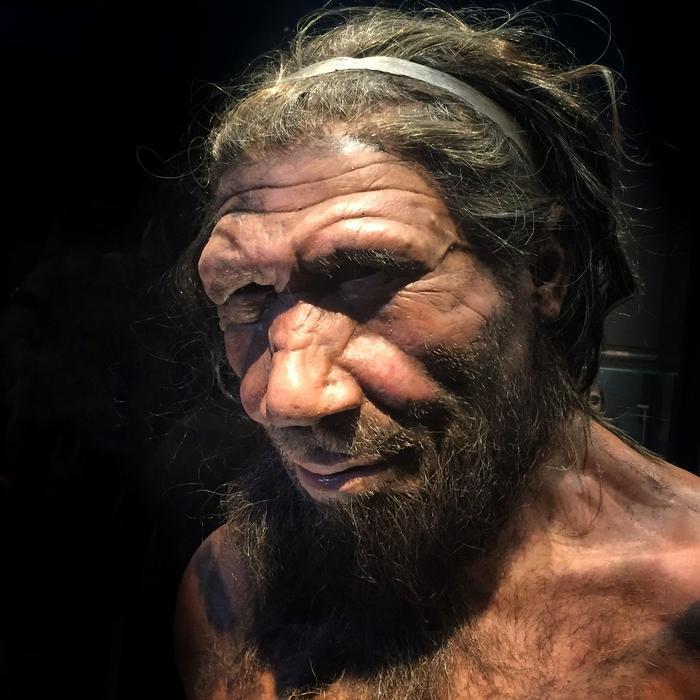
In a groundbreaking study conducted by an international team of researchers, including esteemed faculty from Binghamton University in New York, significant revelations about Neanderthal evolution have surfaced. The study focuses on the loss of genetic variation among Neanderthals, indicating that this genetic bottleneck played a decisive role in their eventual extinction. The implications of this research could reshape our understanding of Neanderthal ancestry and their adaptive capabilities.
At the core of this research is the analysis of morphological diversity in the semicircular canals, which are intricate structures in the inner ear crucial for balance. The semicircular canals develop under stringent genetic controls, meaning their physical variation reflects genetic differences among populations. This makes them an invaluable tool for scholars aiming to uncover the evolutionary dynamics within and between species. Rolf Quam, a distinguished professor of anthropology at Binghamton University, explains that variability in these structures provides insight into underlying genetic diversity.
The study’s authors examined valuable fossil collections from two significant sites: Atapuerca in Spain and Krapina in Croatia. The Atapuerca fossils, which are estimated to be about 400,000 years old, represent some of the earliest known Neandertal ancestors. This ancient evidence points to a time when early human populations roamed the Eurasian continent and are pivotal in understanding the evolutionary trajectory of Neanderthals. Meanwhile, the Krapina site holds the most comprehensive collection of early Neanderthals, dating back approximately 130,000 years.
By employing innovative methodologies, the research team compared the morphological diversity of the semicircular canals among pre-Neanderthals, early Neanderthals, and “classic” Neanderthal specimens sourced from various locations. The results are illuminating; they indicate that the morphological criteria used to assess semicircular canal variation align with findings garnered from ancient DNA studies, which have shown a stark decline in genetic variation around 110,000 years ago. This genetic bottleneck is theorized to have resulted from a significant reduction in population size, a potential precursor to the Neanderthals’ eventual disappearance.
An intriguing aspect of the study is the discovery that classic Neanderthals exhibit markedly lower morphological diversity in their semicircular canals compared to both pre-Neanderthals and early Neanderthals. This disparity suggests a gradual loss of genetic variability as these populations evolved, a conclusion that resonates with findings based on ancient genomic material. Such clear distinctions in morphological traits support the hypothesis of a bottleneck that had dire consequences for Neanderthal evolution.
The research team comprised scholars such as Alessandro Urciuoli from the Institut Català de Paleontologia and Mercedes Conde-Valverde from HM Hospitales and Universidad de Alcalá. Conde-Valverde articulated the merits of including a diverse array of fossil specimens in the study, emphasizing that it afforded the researchers a comprehensive understanding of Neanderthal evolution across time and geography. The pronounced reduction in diversity observed among the Krapina Neanderthals compared to their predecessors offers compelling evidence of a dramatic bottleneck event, which could provide crucial clues regarding the fate of Neanderthals.
Interestingly, the results challenge long-held assumptions regarding the initial stages of the Neanderthal lineage. Prior to this study, it was widely accepted that the emergence of Neanderthals was intrinsically linked to a pronounced loss of genetic diversity. However, researchers found that the morphological diversity displayed by the pre-Neanderthals from sites such as Sima de los Huesos is similar to that of early Neanderthals. This finding raises significant questions about the dynamics of genetic diversity during the inception of the Neanderthal lineage.
The implications of unveiling such a fastidious relationship between morphology and evolutionary lineage are profound. Understanding the nuances surrounding genetic variation and its impact on survival and adaptability is vital not only for Neanderthals but also for contemporary discussions on human evolution. As their study indicates, the loss of genetic diversity could have significant consequences for a population’s ability to adapt to environmental changes or challenges, further emphasizing the importance of maintaining genetic health within populations.
In sum, this comprehensive study invites a reevaluation of the narratives surrounding Neanderthal evolution and extinction. The tightly controlled genetic development of their semicircular canals has unveiled pathways to understanding not just Neanderthal history but the complex interplay of genetics in human evolution. Insights gleaned from this research may well impact future studies and theories surrounding human ancestry, adaptation, and diversity.
As the scientific community continues to explore the repercussions of genetic diversity within the context of evolution, this study stands as a testament to the power of innovative research methodologies and inter-disciplinary collaboration. The findings enrich our understanding of Neanderthals and, more broadly, contribute to the discourse on the survival of ancient species and the roles that genetics and environmental factors play in these processes.
Moving forward, it is essential to integrate these findings into a broader context of anthropological research. The lessons learned from studying Neanderthals could offer vital insights into the challenges faced by modern human populations as they navigate a world replete with rapid environmental changes and societal pressures. Ultimately, this intermingling of past and present could help guide the future of human evolution in an increasingly complex and interconnected world.
Subject of Research: Neanderthal Evolution
Article Title: Semicircular canals shed light on bottleneck events in the evolution of the Neanderthal clade
News Publication Date: 20-Feb-2025
Web References: Nature Communications DOI
References: Nature Communications
Image Credits: Allan Henderson, under CC BY 2.0
Keywords: Neanderthals, Genetic diversity, Evolutionary genetics, Morphology, Ancient DNA, Human evolution, Bottleneck events, Population genetics.
Tags: Atapuerca archaeological siteevolutionary dynamics of Neanderthalsgenetic bottleneck effectsgenetic variation in Neanderthalsimplications for human evolution studiesinner ear structures in evolutionKrapina Neanderthal fossilsmorphological diversity in semicircular canalsNeanderthal ancestry researchNeanderthal extinction causesNeanderthal population declinesignificance of fossil collections





